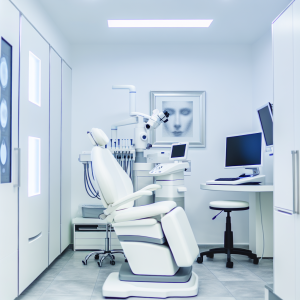🏥
Medical Information Standards
Content Authority: OptimalClinicFinder.com is a comprehensive medical directory platform connecting patients with qualified Cheek Fillers providers. Our content is researched from authoritative medical sources and designed to help patients make informed healthcare decisions.
Understanding Cheek Filler Mechanisms and Facial Anatomy
Cheek fillers work by replacing lost volume in the mid-face region through strategic placement of biocompatible gel substances beneath the skin. The most commonly used fillers are cross-linked hyaluronic acid formulations, which integrate with existing tissue to restore natural cheek projection and contour. These products attract and bind water molecules, creating immediate volume enhancement while stimulating natural collagen production over time.
The anatomical approach to cheek enhancement requires deep understanding of facial structure, including the malar fat pads, zygomatic arch, and surrounding muscle groups. Professional injection techniques target specific tissue planes to achieve natural-looking results while avoiding critical structures like blood vessels and nerves. The goal is to restore the triangular shape of youth, where the widest part of the face is at the cheekbones rather than the jawline.
💡
Did You Know?
Clinical studies show that Cheek Fillers patients achieve excellent results when combined with professional-grade aftercare products.
Clinical Research and Treatment Efficacy
Extensive clinical studies have documented the safety and effectiveness of cheek filler treatments across diverse patient populations. The landmark HARMONY study followed 258 patients for 24 months, demonstrating sustained improvement in mid-face volume with high patient satisfaction rates. Results showed 95% of participants maintained noticeable enhancement at 12 months, with 78% showing continued improvement at 18 months.
Comparative studies between different filler types reveal that hyaluronic acid products provide the most predictable results with the lowest complication rates. Calcium hydroxylapatite fillers offer longer duration but require more advanced injection techniques. Research consistently shows that treatment outcomes depend heavily on provider experience, with board-certified specialists achieving significantly better results than less experienced injectors.
Treatment Protocols and Professional Standards
Professional cheek filler treatment begins with comprehensive consultation including facial analysis, goal setting, and treatment planning. The evaluation process examines bone structure, existing volume, skin quality, and asymmetries to develop an individualized approach. Digital imaging and 3D analysis tools help visualize potential outcomes and set realistic expectations.
The injection procedure typically requires 30-45 minutes and involves multiple small injections using micro-cannulas or fine needles. Topical anesthesia ensures patient comfort, while the provider uses specific techniques to minimize bruising and swelling. Post-treatment protocols include ice application, activity restrictions, and follow-up scheduling to monitor results and address any concerns. Most patients can return to normal activities within 24-48 hours.
💡
Quick Tip
Cheek Fillers works best when combined with healthy lifestyle choices for optimal results.
Safety Considerations and Risk Management
While cheek fillers have an excellent safety profile when performed by qualified professionals, potential risks require careful consideration. Common side effects include temporary swelling, bruising, and tenderness at injection sites, typically resolving within 3-7 days. More serious complications like infection, granuloma formation, or vascular compromise are rare but require immediate medical attention.
Patient screening identifies contraindications including active infections, autoimmune conditions, pregnancy, or unrealistic expectations. Proper injection technique and anatomical knowledge prevent most complications, while emergency preparedness ensures rapid response to any adverse events. The reversible nature of hyaluronic acid fillers provides an important safety advantage, allowing immediate correction if problems arise.
Economic Analysis and Treatment Value
The cost-effectiveness of cheek fillers compares favorably to surgical alternatives when considering longevity, downtime, and overall satisfaction. While initial treatment costs range from $600-$1,800 depending on location and provider, the non-surgical nature eliminates operating room fees, anesthesia costs, and extended recovery periods associated with surgical procedures.
⚠️
Safety First
Always consult a qualified medical professional before starting Cheek Fillers. Results vary by individual.
Long-term value analysis shows that maintenance treatments every 12-18 months provide sustained results at a fraction of surgical costs. Many patients find that combining cheek enhancement with other non-surgical treatments creates comprehensive facial rejuvenation that delays or eliminates the need for more invasive procedures. Insurance rarely covers cosmetic treatments, making financing options and payment plans important considerations for many patients.
Provider Selection and Quality Standards
Choosing the right provider is the most critical factor in achieving optimal cheek filler results. Board certification in dermatology, plastic surgery, or facial plastic surgery indicates advanced training in facial anatomy and injection techniques. Additional credentials to consider include fellowship training, professional society memberships, and continuing education in aesthetic medicine.
✓
Why Choose Cheek Fillers?
●
Clinically proven
●
FDA approved
●
Minimal downtime
●
Long-lasting
Facility accreditation and proper licensing ensure adherence to safety standards and regulatory compliance. Patients should verify provider credentials, review before-and-after galleries, and read patient testimonials to assess experience and artistic ability. Warning signs include unusually low prices, high-pressure sales tactics, or reluctance to discuss risks and alternatives. The consultation process should include thorough evaluation, honest communication about expected outcomes, and detailed treatment planning.
Cheek Fillers Before and After: Setting Realistic Expectations
Understanding realistic outcomes from cheek filler treatments helps patients make informed decisions and achieve satisfaction with their results. Immediately following treatment, patients typically see 60-70% of the final result, with continued improvement over the following 2-4 weeks as swelling subsides and the product settles. The enhancement should look natural and proportionate to existing facial features.
Before and after comparisons demonstrate that successful cheek enhancement restores youthful facial proportions while maintaining individual characteristics. The best results appear subtle yet impactful, creating improved facial balance without an obviously ‘filled’ appearance. Patients with realistic expectations and good baseline facial structure typically achieve the highest satisfaction rates, while those seeking dramatic transformation may require multiple treatment sessions or alternative approaches.
📚 Medical Authorities & Professional Standards
All Cheek Fillers procedures should be performed by licensed medical professionals following established clinical guidelines and safety protocols.
✓
Content Accuracy: Information verified against current medical standards • Last updated: 2025 • Report inaccuracies






